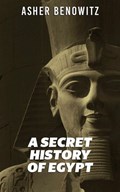Outside Memphis, courtiers established households and built temples dedicated to the royal cult in the provinces. This was not a new phenomenon. Sneferu's reign saw the creation of six statues of the King for various shrines and the construction of a line of small pyramids along the lower valley of the Nile. One of the provincial monuments had a royal statue and a table of offerings nearby, while another stood next to a scribal office in charge of state contracts.
Those modest arrangements suggest that, during the era of the colossal pyramids, such provincial cults had served as points for the supply of provisions and materials to the pyramid makers and the living court at Memphis, as some rare surviving reliefs from the same period indicate that provinces maintained similar royal cults within the temples at Memphis.
Abusir and Saqqara's local temples and shrines were of a different order. Shrines and temples were dedicated to the royal cult, and some state gods continuously observed the royal cult throughout the kingdom. The King issued a decree for the inspector of priests of the God Min in Coptos, a modern town in Upper Egypt, and for all the dependents and possessions of Min's estate, his functionaries, and his entourage.

